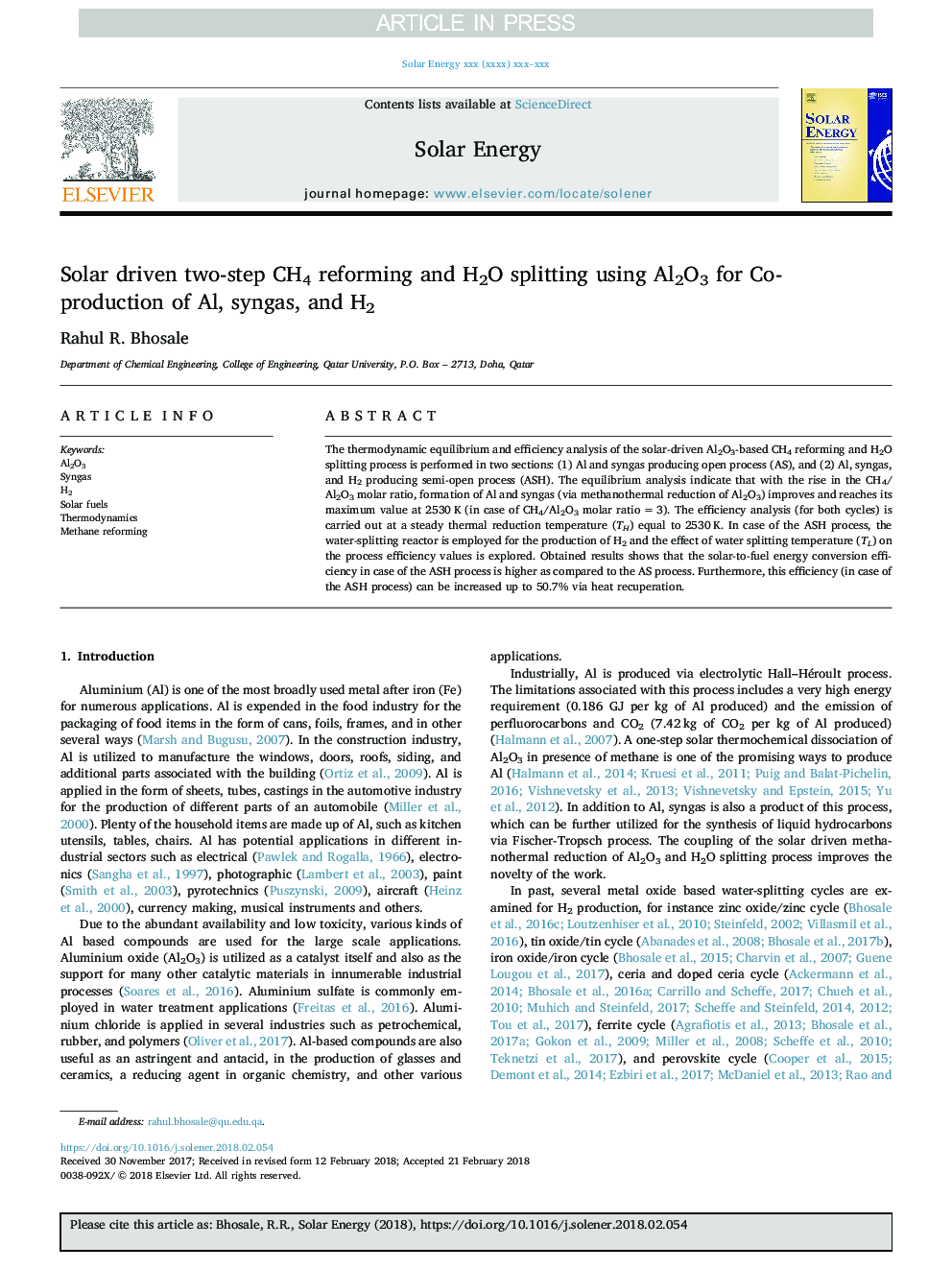| Article ID | Journal | Published Year | Pages | File Type |
|---|---|---|---|---|
| 11011432 | Solar Energy | 2018 | 10 Pages |
Abstract
The thermodynamic equilibrium and efficiency analysis of the solar-driven Al2O3-based CH4 reforming and H2O splitting process is performed in two sections: (1) Al and syngas producing open process (AS), and (2) Al, syngas, and H2 producing semi-open process (ASH). The equilibrium analysis indicate that with the rise in the CH4/Al2O3 molar ratio, formation of Al and syngas (via methanothermal reduction of Al2O3) improves and reaches its maximum value at 2530â¯K (in case of CH4/Al2O3 molar ratioâ¯=â¯3). The efficiency analysis (for both cycles) is carried out at a steady thermal reduction temperature (TH) equal to 2530â¯K. In case of the ASH process, the water-splitting reactor is employed for the production of H2 and the effect of water splitting temperature (TL) on the process efficiency values is explored. Obtained results shows that the solar-to-fuel energy conversion efficiency in case of the ASH process is higher as compared to the AS process. Furthermore, this efficiency (in case of the ASH process) can be increased up to 50.7% via heat recuperation.
Related Topics
Physical Sciences and Engineering
Energy
Renewable Energy, Sustainability and the Environment
Authors
Rahul R. Bhosale,
